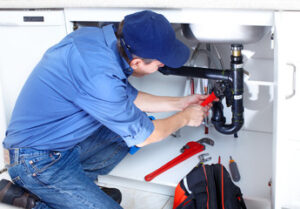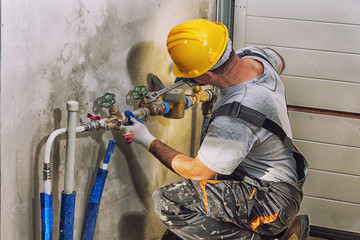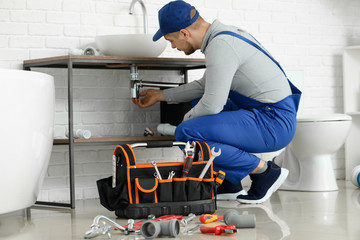The Importance of Proper Plumbing
Plumbing is the network of pipes, fixtures and fittings that carry water and sewage throughout your home. It’s vital to your health and comfort, but it can also be costly if not properly maintained.
Understanding how plumbing works can help you avoid unnecessary costs and stress. Read on to learn more about this essential technology. Visit https://www.plumbing-express.com/ to learn more.
The water supply is a major component of plumbing systems that deliver fresh, clean drinking water and remove waste water and sewage. The system also provides hot water for showers, faucets and washing machines. It also provides water for firefighting and to maintain municipal parks and swimming pools. A water supply system must be regularly inspected and maintained to prevent contamination or excessive wear and tear.
A plumbing system’s water supply lines can be made from a variety of materials. Copper is a popular choice for hot and cold water lines because it’s durable and resistant to corrosion. However, a number of other alternatives are available, including cross-linked polyethylene (PEX) and compressed asbestos cement piping (CASP). PEX pipes are flexible and come in long rolls that can be manipulated around corners with less joining than other pipe materials. They also have lower pressure loss and a lifespan of over 50 years.
PEX and other pipe materials must be properly installed to ensure a safe, reliable water supply. A faulty water line can lead to leaks, which can result in low water pressure at taps and other fixtures. Additionally, a leaky line can allow contaminants like lead to leach into the home’s drinking water. It’s important to have these lines inspected and repaired by professional plumbers to prevent serious side effects.
As water flows from your municipal water supplier through a network of pipes, it collects minerals and other debris along the way. Over time, these deposits can build up in the pipes and restrict flow or cause them to rupture. In addition, the pipes can become corroded due to acidic or hard water. This can cause the water to taste bitter or unpleasant and may damage your appliances, such as your boiler and washing machine.
Once the water enters your house, it travels through a service lateral to connect your plumbing to the water main. This lateral must be installed in cold climate areas below the frost line to prevent freezing. It’s also important to keep the lateral free of obstructions, as blockages can reduce water pressure and make it difficult or impossible for you to use certain fixtures in your home.
Drainage
Drainage is the system of pipes that carry away wastewater from fixtures and appliances. It is an essential part of a building’s plumbing system and prevents water from collecting in the structure, which can cause flooding, structural damage, and mildew or mold.
A drainage system consists of pipes, fixtures, and other components that are used to transport water and waste liquids throughout the property. It is also used to protect buildings and other structures from floods, which can be caused by heavy rainfall or high water levels. The drainage system also helps to keep the surrounding environment free from any potential environmental hazards.
The standard house drainage system operates on gravity and consists of a soil stack and pipe, a toilet stack and pipe, and a main sewer line. The soil stack and pipe collects the discharge from toilets, floor drains, wash basins, and other drains in the building’s interior. This pipe is then carried to the house drain through a venting system. This prevents siphonage and back pressure that can clog or pollute the drainage system.
Each fixture or appliance is fitted with a drain opening. Water flows into these from the supply lines, and waste water is drawn away through traps, which are usually shaped like a U. These traps seal the drain opening and prevent sewer gases from entering the home. The traps are emptied periodically to avoid the build-up of debris, which can cause clogged drains. Clogged drains are often cleared by pouring drain cleaner down the pipe.
A sewer line carries the waste water from all sinks, showers, bathtubs, and toilets in your home to a municipal sewer or septic tank. The sewage is then treated to remove harmful organisms and released into the environment. The drainage system also consists of surface water drains, which take in rainwater from gutters and other outdoor surfaces and carry it to a nearby river or stream.
In addition to preventing drainage problems, it’s important to regularly inspect your property’s plumbing system and have any issues repaired immediately. This can help prevent the formation of rust, which can contaminate the water and cause it to lose its quality. It can also reduce the likelihood of leaks, which can be extremely dangerous for your family or pets.
Ventilation
Ventilation is the process by which fresh air is provided to occupied spaces and stale air is removed. It is used to help maintain good indoor air quality by diluting metabolic pollutants (carbon dioxide and odour) and other pollutants that may be emitted from building components. However, careful air flow and temperature control is needed to prevent mixing of these pollutants above the occupant breathing zone.
A well-maintained plumbing system is unlikely to experience many problems, but even the best systems encounter hiccups from time to time. Knowing the common causes of leaks, clogs and other plumbing woes can help you address them quickly and effectively.


